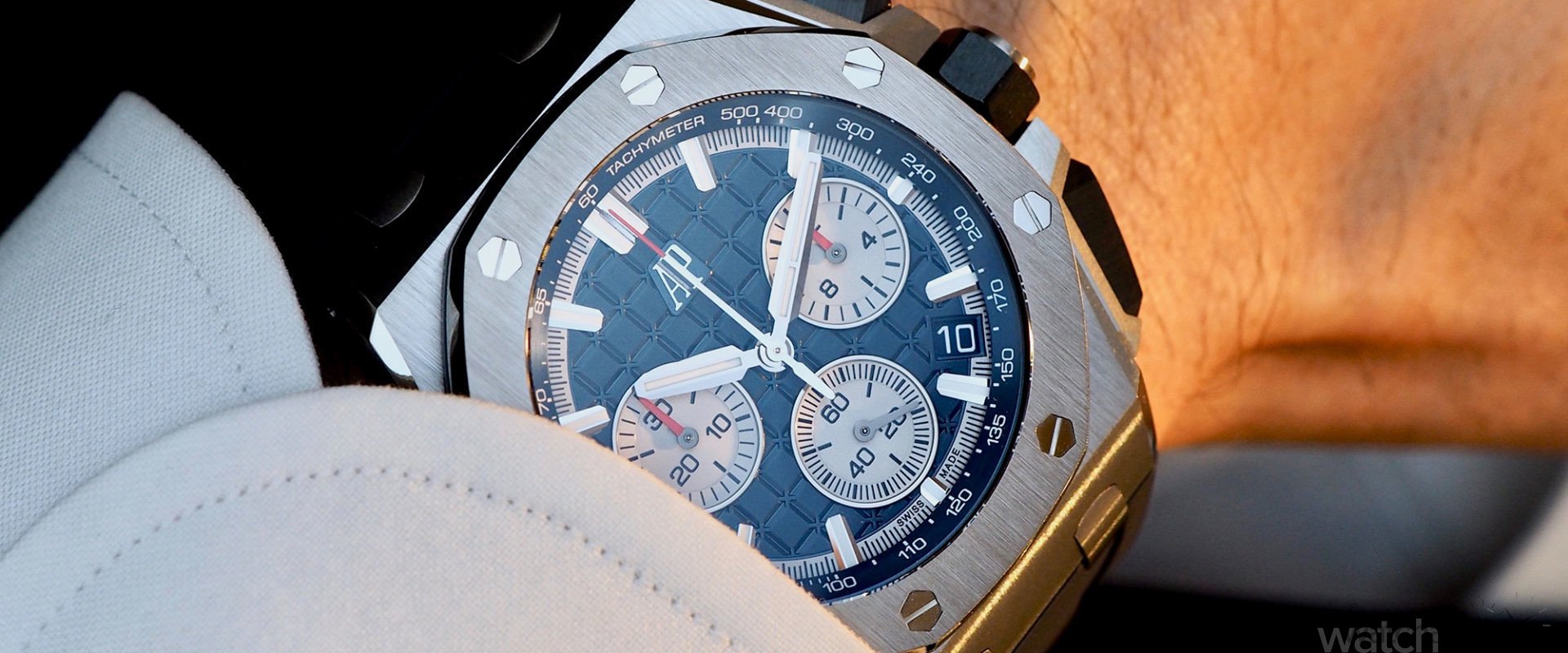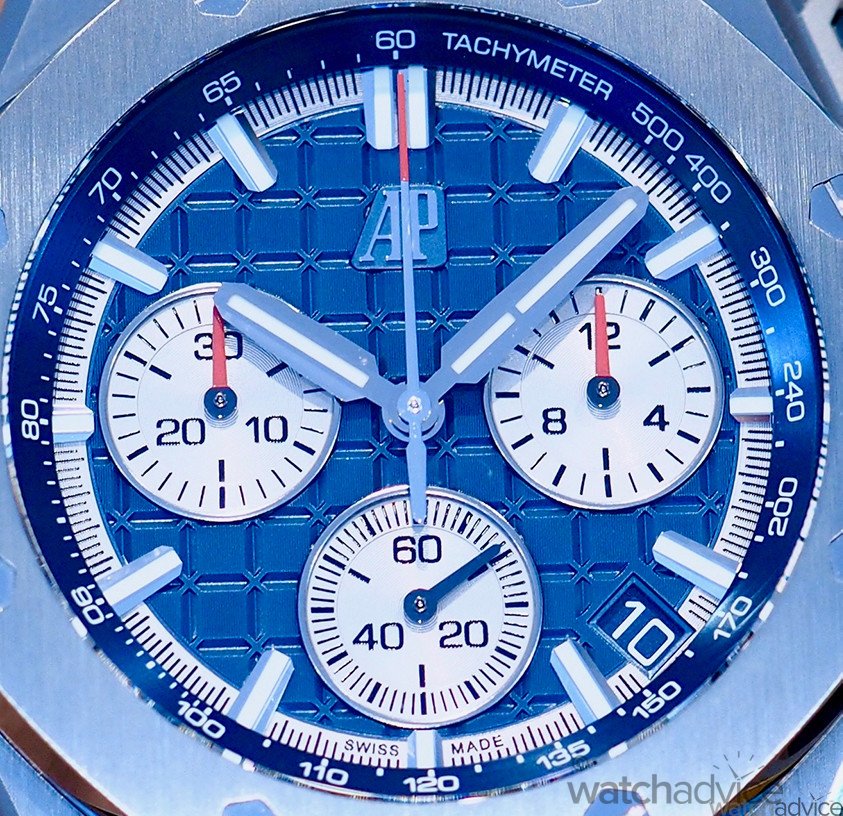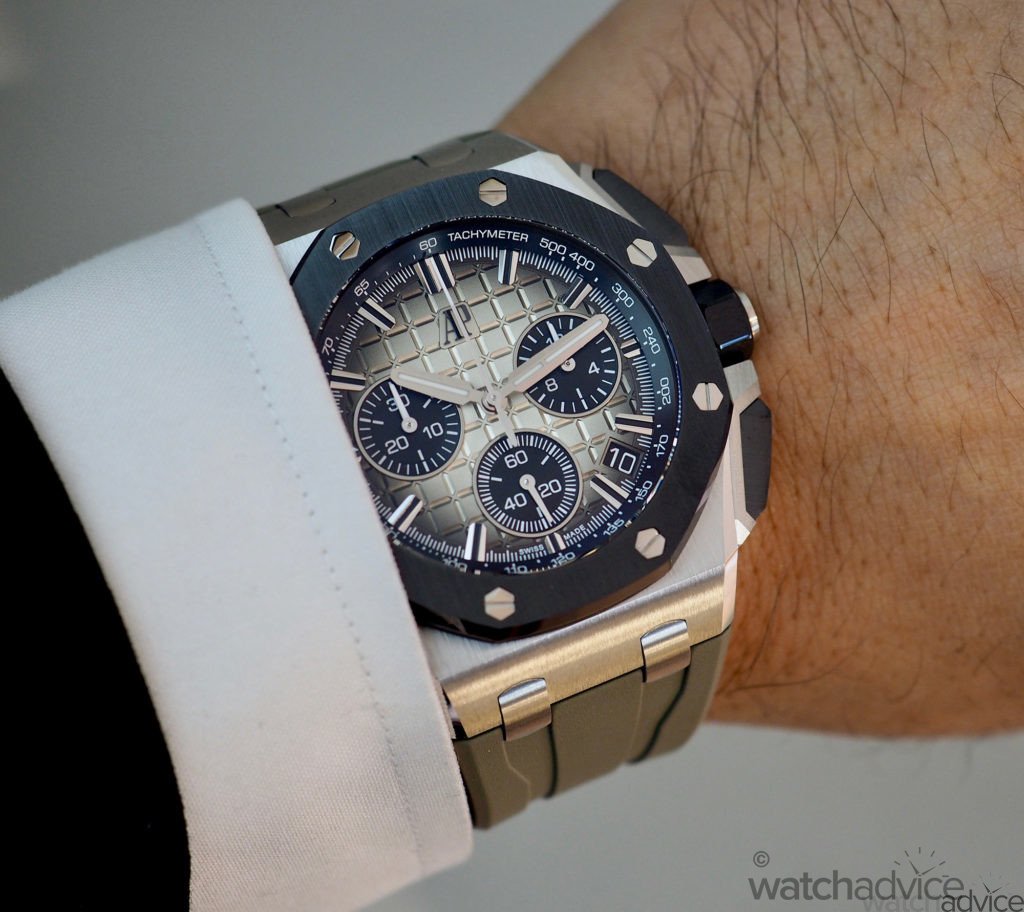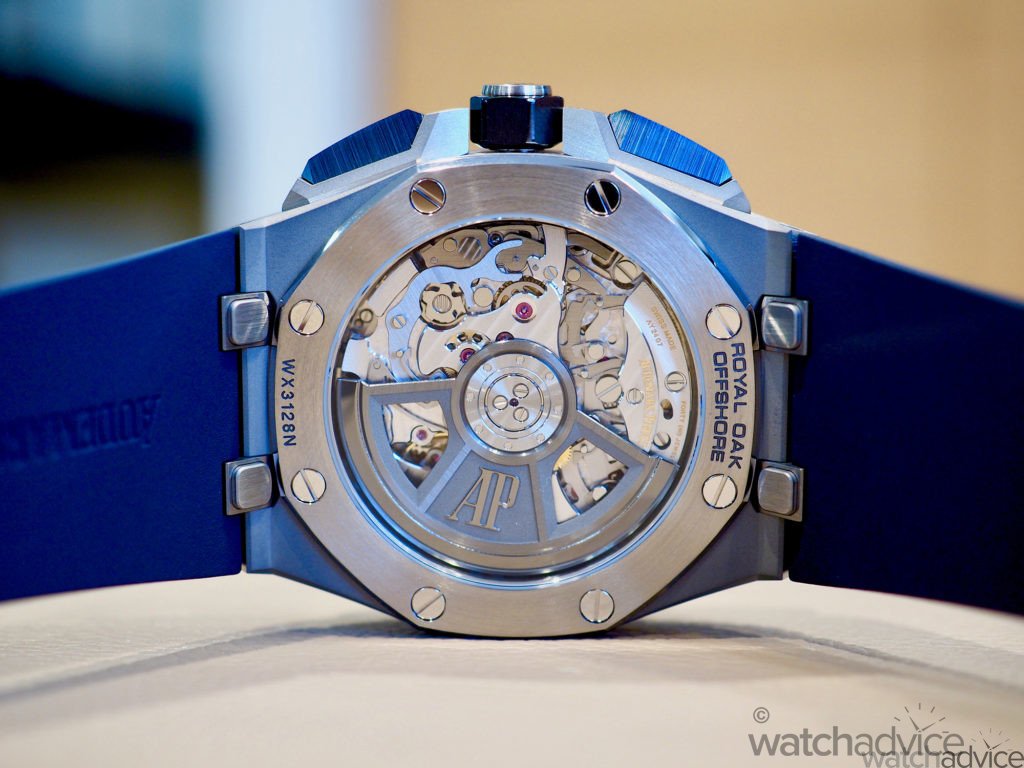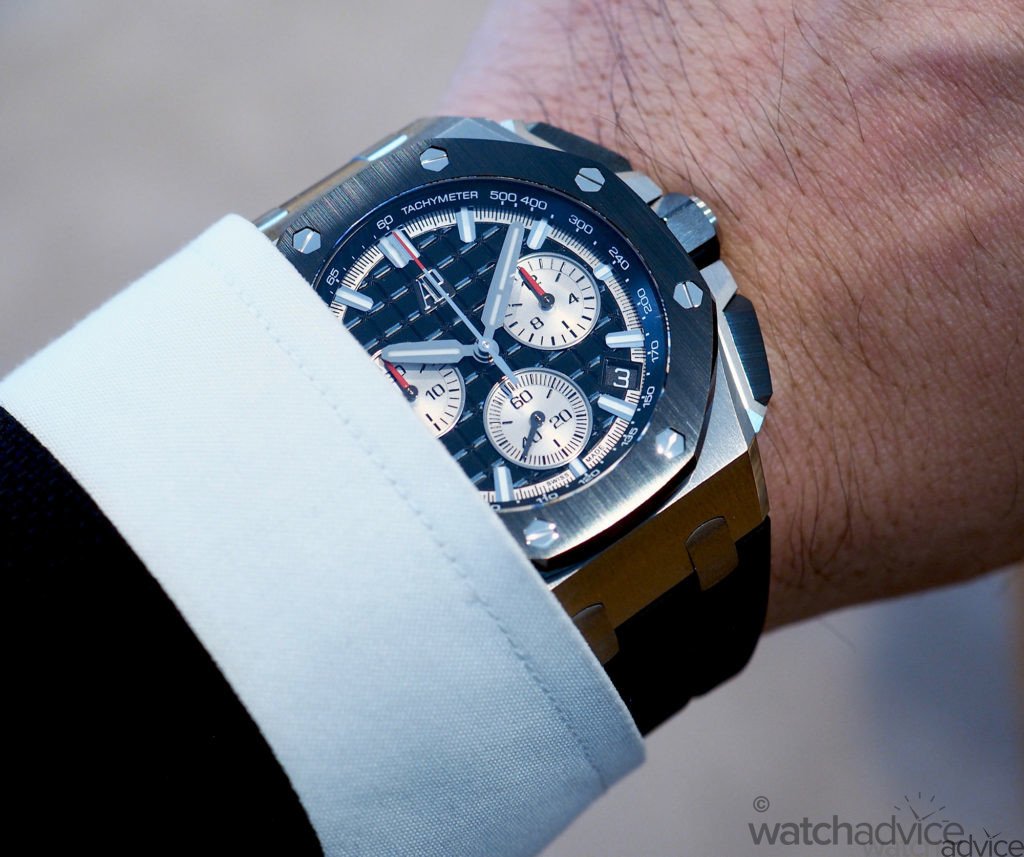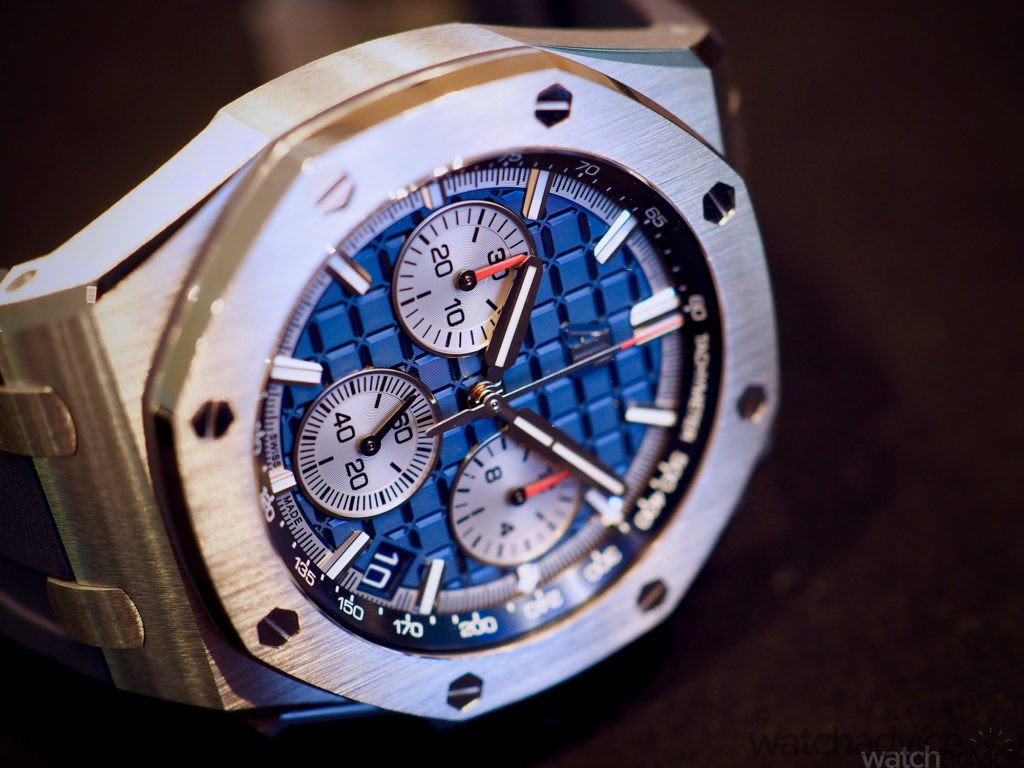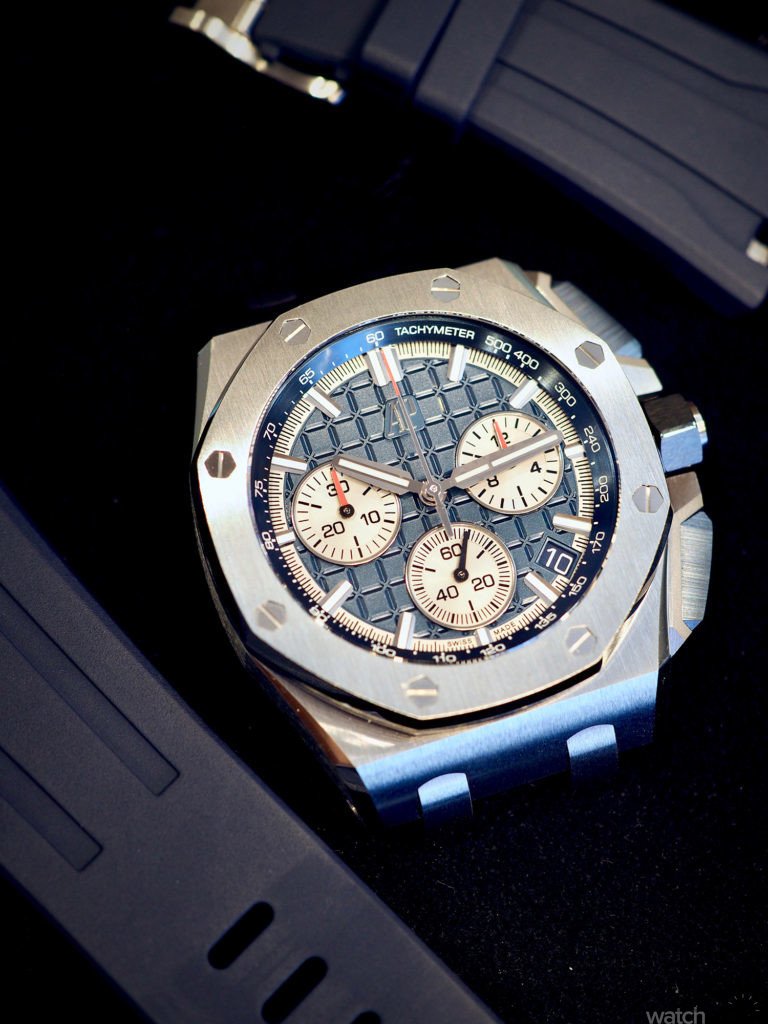First up, let me get something off my chest. I have never been a fan of the movement used in the AP Royal Oak Offshore. As much as I like the style of the watch, I’ve always felt the movement isn’t up to scratch, especially for the price. Of course, not many people will care about this, but one look at how deep-set the date is, and you know clearly that it is a modular construction (module by Dubois-Deprez). And really, at $50k a pop, is it really too much to ask for an integrated chronograph movement?
I’m sure there are many out there who will argue that this is part of the charm. It’s what makes the Royal Oak Offshore different. But I have a feeling given how hyped the watches are, people are only too happy to buy one when one is available, and straight away, blinders come on, and the denial begins. Especially when the layout is exactly the same as the ubiquitous ETA 7750 chronographs (12-9-6 sub-dials). Again, nothing wrong with the ETA 7750. In fact, it is one of my favourite entry-level, workhorse movements, but even this one is integrated…
Fine. Call me a chronograph snob if you like. As we all know, this hobby is highly personal and highly subjective. I just prefer my chronographs to be integrated. (Although I’m not fussy regarding whether it’s a vertical or horizontal clutch, and whether or not the engagement is controlled by a column-wheel or a cam/lever assembly – I’m sure there are people out there who swears by one form over another…)
This is just a long-winded way to say that I am very glad to see the new in-house chronograph being fitted into the latest Offshore range. The Calibre first debuted in the “controversial” Code 11:59 collection. It is now integrated, with a higher beat rate (at 28,800 mph), longer power reserve of 70 hours, and befitting for a watch in the $50k mark. It also features the flyback function, meaning you can reset the running chronograph without stopping it first. The rotor is in 22k blackened gold, making it “sportier”.
The new Offshore collection certainly looks the part. More ergonomically designed, it’s the first major “facelift” since the early 2000s. At 43mm, it is by no means a small watch, and like all Royal Oaks, the lug-to-lug is quite lengthy given the style. However, I doubt many people will whinge or even mention the lug-to-lug on an AP. Having said that, the watch sits nicely on a 16.5cm wrist and surprisingly does not feel too tall at all (officially 14.4mm).
Another small gripe I had with the Offshore was how much the rectangular pushers protrudes from the case, making the overall case seem a little unbalanced. The updated version now has the pushers and crown in-line, making it a more pleasing design aesthetically, whilst remaining resolutely an unmistakeable Offshore design code. I just kinda wished the ceramic pushers and crown colours are also matched with the rest of the watch (looking at you – the blue dial titanium version, which despite the whinge, is actually my pick of the bunch…)
Next, we come to the most important part of the watch – the dial. The “Mega Tapisserie” may look carried over at first, but look deeper and you’ll see that each “square” is more pronounced with sharper, defining edges. It might not seem like much, but in person, it makes a huge difference. The subdials are nicely balanced and you’d be hard-pressed to notice that in actual fact the 3:00 and 9:00 subdials are just slightly above the centre horizontal line (not dissimilar to the Rolex Daytona, but less obvious). The numbering in the dials are also balanced and symmetrical with numerals at 12, 4, and 8 positions. Yes, the date is at 4:30, but you’d hardly notice it.
And finally, as is the trend in the watch world, the Offshore now comes with a quick-change strap system, and each watch comes with an additional rubber strap in the box. It’s easy enough to swap out the strap and the buckle without consulting the instruction manual.
Overall this new Offshore is aesthetically and mechanically speaking, a complete offering from AP. There are two models in steel, two in titanium and one model in gold.
As an aside, I’ve cheekily placed the just-released Zenith Defy Extreme next to the Offshore 43mm. Just so you all get an idea of the differences. The Extreme at 45mm seems smaller side by side, even though it has a bigger dial opening. To me, there are similarities, but really, that’s like saying round dress watches are similarly styled…
AP Royal Oak Offshore chronograph Specification:
- Case: 43mm, 14mm thickness
- Case Material: Stainless steel
- Dial: Blue dial with “Méga Tapisserie” pattern
- Crystal: Sapphire, domed on both sides, anti-reflective coating inside
- Water resistance: 100 meters
- Movement: Manufacture calibre 4401
- Power reserve: 70 hours
Australian Retail Pricing:
RRP$52,900 in titanium
RP$ $54,800 in steel/ceramic bezel


